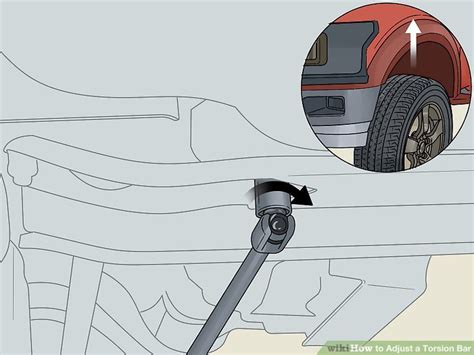Stop That Annoying Sag: Adjust Your Torsion Bars Today
Is your vehicle looking a little…droopy? That unsettling sag in your front end can be more than just an eyesore; it can affect your handling, ride comfort, and even your vehicle's alignment. Often, the culprit is your torsion bars, those sturdy steel bars responsible for supporting the weight of your vehicle and determining its ride height. Fortunately, adjusting your torsion bars is often a relatively simple process that can restore your vehicle's proud stance. This guide will walk you through everything you need to know about torsion bar adjustment, helping you regain control and conquer that annoying sag.
What are Torsion Bars?
Torsion bars are a type of spring used in many vehicles, particularly older trucks and SUVs, and some European cars. Unlike coil springs or leaf springs, torsion bars are long, cylindrical bars that twist under load. This twisting action provides the suspension's spring rate, absorbing bumps and supporting the vehicle's weight. They are typically located in the vehicle's chassis, connecting to control arms or other suspension components.
Why is My Vehicle Sagging?
Several factors can contribute to a sagging front end, even beyond simple wear and tear:
- Age and Wear: Over time, torsion bars can lose their effectiveness, leading to a gradual sag. This is simply due to the metal's fatigue under constant stress.
- Weight Distribution: Carrying heavy loads consistently can compress the torsion bars, resulting in a permanent sag.
- Incorrect Adjustment: Improper torsion bar adjustment during previous maintenance can also lead to uneven ride height.
- Damaged Suspension Components: Problems with other suspension parts, such as worn ball joints or control arm bushings, can exacerbate the sag.
How to Adjust Your Torsion Bars: A Step-by-Step Guide
Disclaimer: Adjusting torsion bars requires mechanical aptitude and the right tools. If you're uncomfortable working on your vehicle, consult a qualified mechanic. Improper adjustment can negatively impact your vehicle's handling and safety.
The specific steps for adjusting your torsion bars vary depending on your vehicle's make and model. Consult your owner's manual for precise instructions and torque specifications. Generally, the process involves:
- Secure the Vehicle: Ensure your vehicle is parked on a level surface and securely chocked. Engage the parking brake.
- Locate the Torsion Bar Adjustment Points: These are usually located near the control arms or suspension mounts. They often have a bolt or clamp that allows for rotation.
- Measure the Ride Height: Before adjusting, measure the distance from the ground to a specific point on your vehicle's frame or body. This provides a baseline for comparison.
- Adjust the Torsion Bar: Using the appropriate tools (usually a wrench or socket), carefully rotate the adjustment point. Turning the bar clockwise usually raises the vehicle's height, while counterclockwise lowers it. Make small adjustments (1/4 to 1/2 turn) at a time and check the ride height after each adjustment.
- Check Alignment: Once you've achieved the desired ride height, have your vehicle's alignment checked by a professional. Adjusting torsion bars can affect the alignment, and this is crucial for safe and proper handling.
How Often Should I Adjust My Torsion Bars?
There's no set schedule for torsion bar adjustment. It depends on factors like driving habits, vehicle load, and overall wear and tear. Regularly inspect your vehicle's ride height. If you notice a significant sag, it's time to consider an adjustment.
What are the Risks of Incorrect Torsion Bar Adjustment?
Improper adjustment can lead to several problems:
- Uneven Ride Height: This affects handling and can lead to premature tire wear.
- Poor Handling: An improperly adjusted suspension can make your vehicle feel unstable and difficult to control.
- Damage to Suspension Components: Excessive stress on other suspension parts can lead to premature failure.
- Premature Tire Wear: Incorrect alignment, a byproduct of improper torsion bar adjustment, leads to uneven tire wear.
Can I Adjust My Torsion Bars Myself?
While you can adjust your torsion bars yourself, it's crucial to understand the risks involved. If you're not comfortable working on your vehicle, it's best to leave it to a qualified mechanic.
What if My Torsion Bars are Broken or Worn Out?
If your torsion bars are severely worn or broken, adjustment won't fix the problem. They'll need to be replaced.
This comprehensive guide provides a solid foundation for understanding and potentially adjusting your vehicle's torsion bars. Remember, safety and precision are paramount. If in doubt, always consult a professional mechanic.

